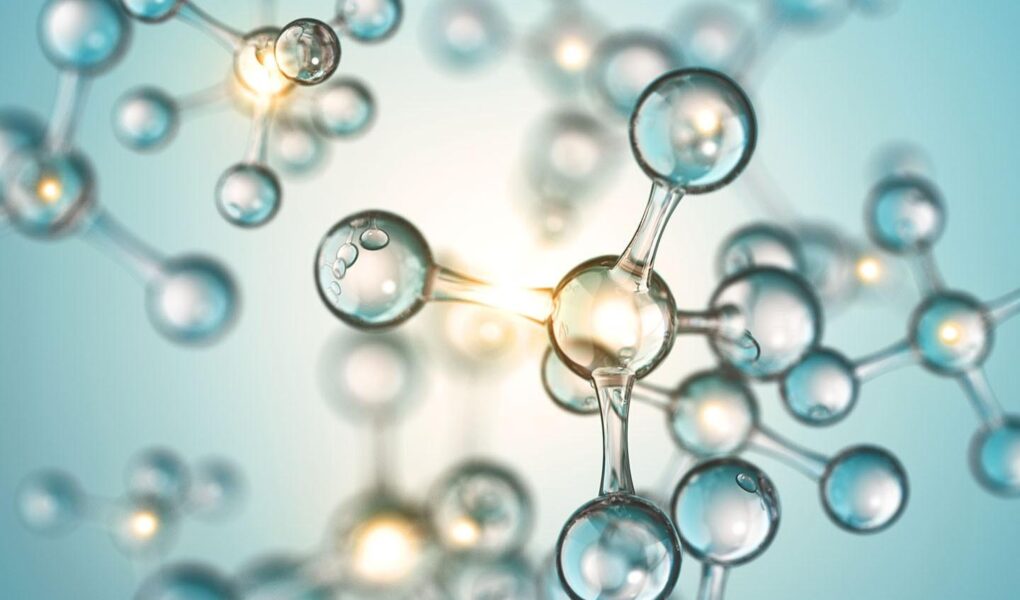Unraveling the Chemical Tapestry of Marijuana: A Journey into Nature’s Complex Creation
In the realm of botany, few plants inspire as much intrigue and debate as marijuana. Often shrouded in an air of mystique, this versatile herb has captured the interests of everyone from passionate advocates to skeptical critics. At the heart of these discussions lies a rich tapestry of chemicals, each contributing to the plant’s unique characteristics and effects. From the well-known compounds like THC and CBD to an array of lesser-known cannabinoids and terpenes, the chemical constituents of marijuana form a complex ecosystem that warrants exploration. Understanding these chemicals not only enhances our appreciation of the plant but also opens the door to informed conversations about its uses, benefits, and implications for health and society. In this article, we will dive into the intricate world of chemicals in marijuana, shedding light on their roles and relevance in today’s expanding landscape of cannabis research and application.
Table of Contents
- Exploring the Cannabinoid Spectrum and Its Effects on the Body
- Terpenes and Flavonoids: The Unsung Heroes of Cannabis Chemistry
- Understanding Potency: Measuring THC and CBD for Safer Consumption
- Navigating Product Labels: Tips for Identifying Quality in Marijuana Products
- Q&A
- Future Outlook
Exploring the Cannabinoid Spectrum and Its Effects on the Body
Understanding the diverse array of cannabinoids found in marijuana can shed light on their unique effects on the human body. Cannabinoids are a group of chemical compounds that interact with the endocannabinoid system, a crucial component in regulating various physiological processes. Among the most researched cannabinoids are:
- THC (Tetrahydrocannabinol) – The primary psychoactive component responsible for the “high” associated with marijuana.
- CBD (Cannabidiol) – Known for its therapeutic properties without intoxicating effects, often used for anxiety, pain relief, and inflammation.
- CBG (Cannabigerol) - A non-psychoactive cannabinoid noted for its potential antibacterial and anti-inflammatory benefits.
- CBN (Cannabinol) – Often formed as THC ages, CBN is explored for its sedative effects and potential as a sleep aid.
The synergistic effect of these cannabinoids, often referred to as the “entourage effect,” plays an essential role in how marijuana affects the body. Different cannabinoids and their proportions can influence the therapeutic and psychoactive outcomes of cannabis consumption. The table below summarizes the primary cannabinoids and their potential effects:
| Cannabinoid | Primary Effects |
|---|---|
| THC | Psychoactive effects, pain relief |
| CBD | Anti-anxiety, anti-inflammatory |
| CBG | Antibacterial, promotes appetite |
| CBN | Promotes sleep, mild psychoactivity |
Terpenes and Flavonoids: The Unsung Heroes of Cannabis Chemistry
While cannabinoids like THC and CBD often steal the spotlight in discussions about cannabis, terpenes and flavonoids quietly play pivotal roles in defining the plant’s unique character. Terpenes, which are aromatic compounds found in many plants, contribute to the diverse array of scents and flavors in cannabis, ranging from citrusy and sweet to earthy and spicy. These compounds have potential therapeutic benefits of their own, including anti-inflammatory and anxiety-reducing effects. Some common terpenes include:
- Myrcene: Known for its musky scent, it may promote relaxation.
- Limonene: Offers a citrus aroma that could elevate mood.
- Pinene: Smells like pine and may enhance alertness.
In addition to terpenes, flavonoids are another group of phytochemicals that help create the rich tapestry of cannabis chemistry. These compounds not only provide color to the leaves and buds but also exhibit antioxidant and anti-inflammatory properties. Flavonoids work synergistically with cannabinoids and terpenes to enhance the plant’s overall effects. Some noteworthy flavonoids include:
| Flavonoid | Potential Benefits |
|---|---|
| Kaempferol | May support heart health and combat inflammation. |
| Quercetin | Known for its antihistamine properties and immune support. |
| Apigenin | Could help with anxiety and promote sleep. |
Understanding Potency: Measuring THC and CBD for Safer Consumption
To ensure a safer experience with cannabis, it’s crucial to understand the potency levels of THC (tetrahydrocannabinol) and CBD (cannabidiol), the two most prominent compounds found in marijuana. Both compounds play distinct roles, with THC primarily responsible for the psychoactive effects, while CBD is often sought for its medicinal benefits. When purchasing marijuana products, consumers should pay attention to the percentages of these cannabinoids, as moderate doses can enhance the beneficial effects, whereas high concentrations might lead to unwanted side effects. Here are some key aspects to consider:
- THC Levels: Higher THC levels can lead to heightened euphoria but may also increase anxiety or paranoia in susceptible individuals.
- CBD Levels: A significant amount of CBD can counteract some of the psychoactive effects of THC, making it a favorable choice for users seeking therapeutic benefits without feeling “high.”
- Dosing: Beginners may benefit from products with balanced ratios of THC to CBD to gauge personal tolerance before progressing to higher potency options.
Understanding the diversity of cannabis products also involves recognizing various consumption forms and their respective potencies. Edibles, oils, tinctures, and flowers each have unique absorption rates and durations of effect, making it essential for users to choose wisely based on their needs and experiences. Here’s a simple reference table that outlines common forms of cannabis consumption and their relative potency:
| Consumption Form | Potency Level | Onset Time |
|---|---|---|
| Flower | Medium to High | Immediate |
| Edibles | Medium | 30 mins to 2 hours |
| Oils/Tinctures | Low to High | 15 to 45 mins |
Navigating Product Labels: Tips for Identifying Quality in Marijuana Products
When exploring marijuana products, understanding the labels is paramount to ensure quality and safety. First and foremost, check for information on the cannabinoid profile. A detailed breakdown can reveal the percentages of THC, CBD, and other cannabinoids present. Look for products that provide the entire spectrum of cannabinoids, as this indicates a more comprehensive approach to cultivation and extraction. In addition to cannabinoids, pay attention to the terpene profile, which can enhance not only the product’s flavor but also its therapeutic effects.
Furthermore, scrutinize the labeling for any third-party lab testing information. Quality products will often display results from independent labs, showing that contaminants such as pesticides, heavy metals, or mold have been tested and cleared. When selecting a product, consider these key factors:
- Brand Reputation: Check reviews and community feedback.
- Harvest Date: Freshness can drastically affect potency and flavor.
- Ingredients: Look for all-natural additives, avoiding those full of synthetic compounds.
Understanding these elements will equip you to make informed choices in the ever-expanding cannabis market.
Q&A
Q&A: Understanding Chemicals in Marijuana
Q: What are the primary chemical components found in marijuana?
A: Marijuana is composed of hundreds of chemical compounds, but the two most well-known categories are cannabinoids and terpenes. Cannabinoids, such as THC (tetrahydrocannabinol) and CBD (cannabidiol), are the primary active chemicals that interact with the body’s endocannabinoid system. Terpenes, on the other hand, are responsible for the plant’s aroma and flavor and can also have therapeutic effects.
Q: How do cannabinoids like THC and CBD differ in their effects?
A: THC is the psychoactive component that produces the ‘high’ commonly associated with marijuana. It can induce feelings of euphoria, relaxation, and altered sensory perception. CBD, in contrast, is non-psychoactive and is often valued for its potential therapeutic benefits, including anti-inflammatory and anxiolytic properties. Many users appreciate CBD for its calming effects without the intoxication associated with THC.
Q: What role do terpenes play in marijuana?
A: Terpenes are aromatic compounds found in many plants, including marijuana. Beyond contributing to the unique aroma and flavor profiles of different strains, terpenes may enhance or modify the effects of cannabinoids through a phenomenon known as the “entourage effect.” For instance, myrcene is thought to have calming effects, while limonene may elevate mood, offering potential synergistic benefits.
Q: Are there any health concerns associated with the chemicals in marijuana?
A: While marijuana has potential therapeutic benefits, certain health concerns are associated with its use, particularly due to THC. Regular consumption, especially in high doses, may lead to cognitive impairment, dependency, and exacerbated mental health issues in predisposed individuals. Additionally, the method of consumption—such as smoking—can introduce harmful substances that impact lung health. Education about dosage and methods of intake is essential for informed use.
Q: How do various cultivation methods impact the chemical composition of marijuana?
A: Cultivation methods, including soil quality, lighting, and nutrients, can significantly influence the chemical composition of marijuana. For instance, outdoor grown cannabis may develop different terpene profiles due to exposure to natural elements, while indoor cultivation allows for more controlled conditions, potentially enhancing cannabinoid content. Additionally, organic practices may affect the overall quality and safety of the final product.
Q: What should consumers look for when selecting marijuana products?
A: When choosing marijuana products, consumers should pay attention to lab-testing results, which provide information on cannabinoid and terpene profiles, as well as contaminant testing for pesticides and heavy metals. Strains labeled with specific THC and CBD percentages can guide users in selecting products that align with their preferences and therapeutic needs. Seeking guidance from knowledgeable dispensary staff can also enhance the selection process.
Q: Is it possible to have negative reactions to marijuana’s chemicals?
A: Yes, some individuals may experience adverse reactions to marijuana. Common negative effects include anxiety, paranoia, and increased heart rate, particularly from high doses of THC. Additionally, some users may have allergic reactions to specific terpenes. It’s essential for new users to start with low doses and monitor their body’s response to mitigate potential discomfort.
Q: How is research on marijuana’s chemicals evolving?
A: Research on marijuana is rapidly expanding as legal barriers diminish and interest in its medical benefits grows. Scientists are exploring the therapeutic potential of various cannabinoids and terpenes, as well as their mechanisms of action within the human body. This ongoing research aims to provide a deeper understanding of the plant’s complex chemistry and to inform more effective and safe usage guidelines for consumers.
Q: What future developments can we expect regarding the chemicals in marijuana?
A: As legalization progresses and public interest continues to rise, we can anticipate greater innovation in products derived from marijuana. This may include more refined extraction methods to isolate specific cannabinoids and terpenes for targeted therapeutic applications. Additionally, advancements in genetic research may lead to cultivars with enhanced chemical profiles, further tailoring marijuana to meet diverse consumer needs.
Q: Will marijuana use be more widely accepted as research progresses?
A: As research sheds light on the potential benefits and risks of marijuana, public perception may shift towards broader acceptance. Greater education about its medicinal properties, coupled with responsible use practices, could pave the way for more inclusive policies and societal attitudes. This evolving landscape suggests that informed dialogue will be key in shaping the future of marijuana in our communities.
Future Outlook
As we draw the curtain on the intricate world of chemicals in marijuana, it becomes clear that this seemingly simple plant is a veritable treasure trove of compounds, each contributing to its diverse effects and potential benefits. From cannabinoids like THC and CBD that interact with our body’s endocannabinoid system, to terpenes that add aromatic complexity and influence our experience, the chemistry of marijuana is both fascinating and complex.
Understanding these chemicals is not only crucial for medical and recreational users but also for researchers striving to unlock the secrets of this age-old botanical ally. As attitudes continue to shift and more studies emerge, grasping the nuances of marijuana’s chemical makeup can empower us to make informed choices, whether for wellness or enjoyment.
the dialogue surrounding marijuana and its chemicals is as dynamic as the compounds themselves—constantly evolving with new insights. As we venture forward, let us carry with us the knowledge that beneath the surface of this remarkable plant lies a rich tapestry of chemistry, one that invites curiosity and respect as we explore its potential and implications for our future.



